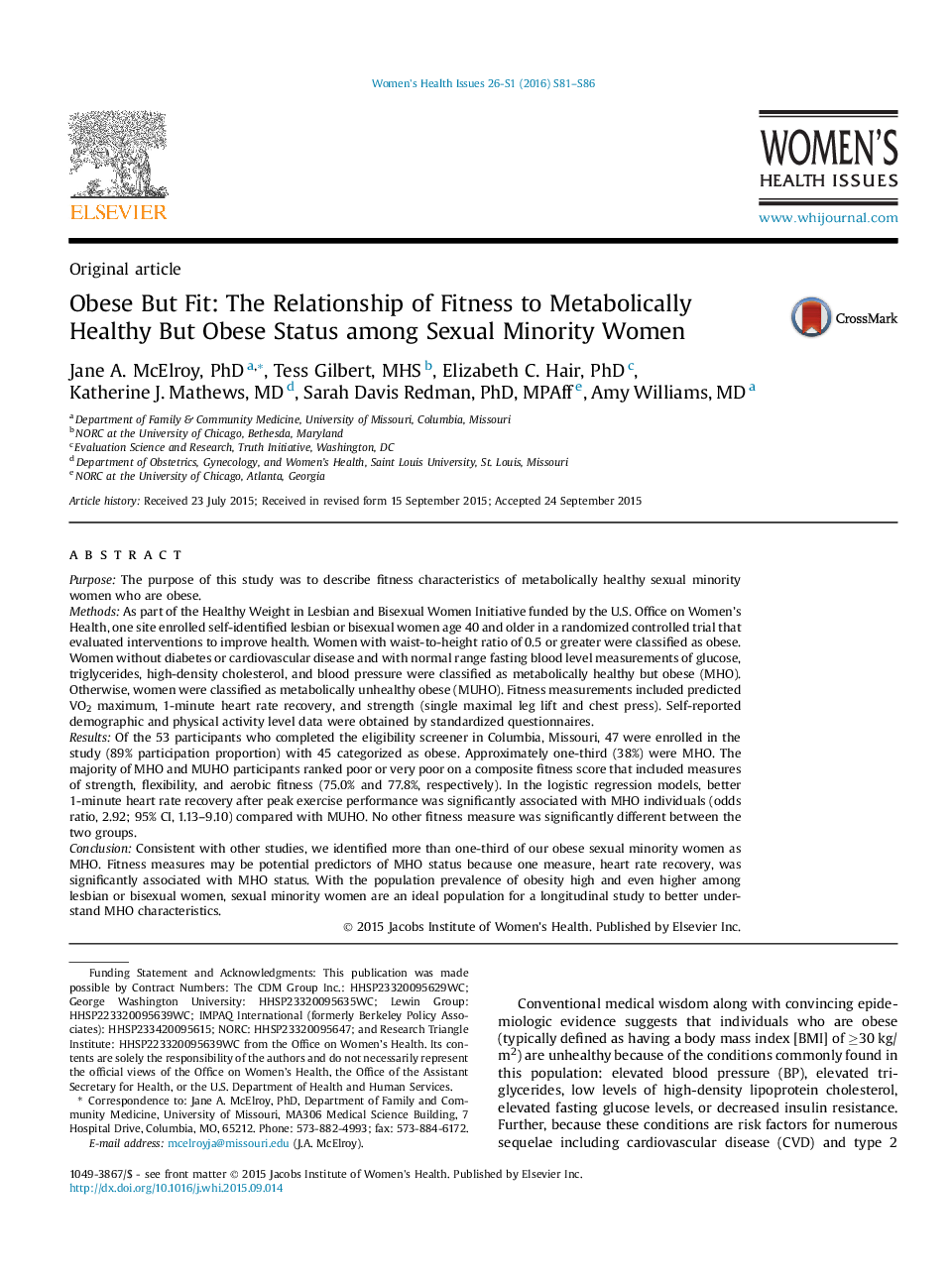| کد مقاله | کد نشریه | سال انتشار | مقاله انگلیسی | نسخه تمام متن |
|---|---|---|---|---|
| 1093054 | 952361 | 2016 | 6 صفحه PDF | دانلود رایگان |
PurposeThe purpose of this study was to describe fitness characteristics of metabolically healthy sexual minority women who are obese.MethodsAs part of the Healthy Weight in Lesbian and Bisexual Women Initiative funded by the U.S. Office on Women's Health, one site enrolled self-identified lesbian or bisexual women age 40 and older in a randomized controlled trial that evaluated interventions to improve health. Women with waist-to-height ratio of 0.5 or greater were classified as obese. Women without diabetes or cardiovascular disease and with normal range fasting blood level measurements of glucose, triglycerides, high-density cholesterol, and blood pressure were classified as metabolically healthy but obese (MHO). Otherwise, women were classified as metabolically unhealthy obese (MUHO). Fitness measurements included predicted VO2 maximum, 1-minute heart rate recovery, and strength (single maximal leg lift and chest press). Self-reported demographic and physical activity level data were obtained by standardized questionnaires.ResultsOf the 53 participants who completed the eligibility screener in Columbia, Missouri, 47 were enrolled in the study (89% participation proportion) with 45 categorized as obese. Approximately one-third (38%) were MHO. The majority of MHO and MUHO participants ranked poor or very poor on a composite fitness score that included measures of strength, flexibility, and aerobic fitness (75.0% and 77.8%, respectively). In the logistic regression models, better 1-minute heart rate recovery after peak exercise performance was significantly associated with MHO individuals (odds ratio, 2.92; 95% CI, 1.13–9.10) compared with MUHO. No other fitness measure was significantly different between the two groups.ConclusionConsistent with other studies, we identified more than one-third of our obese sexual minority women as MHO. Fitness measures may be potential predictors of MHO status because one measure, heart rate recovery, was significantly associated with MHO status. With the population prevalence of obesity high and even higher among lesbian or bisexual women, sexual minority women are an ideal population for a longitudinal study to better understand MHO characteristics.
Journal: Women's Health Issues - Volume 26, Supplement 1, 7 July 2016, Pages S81–S86
